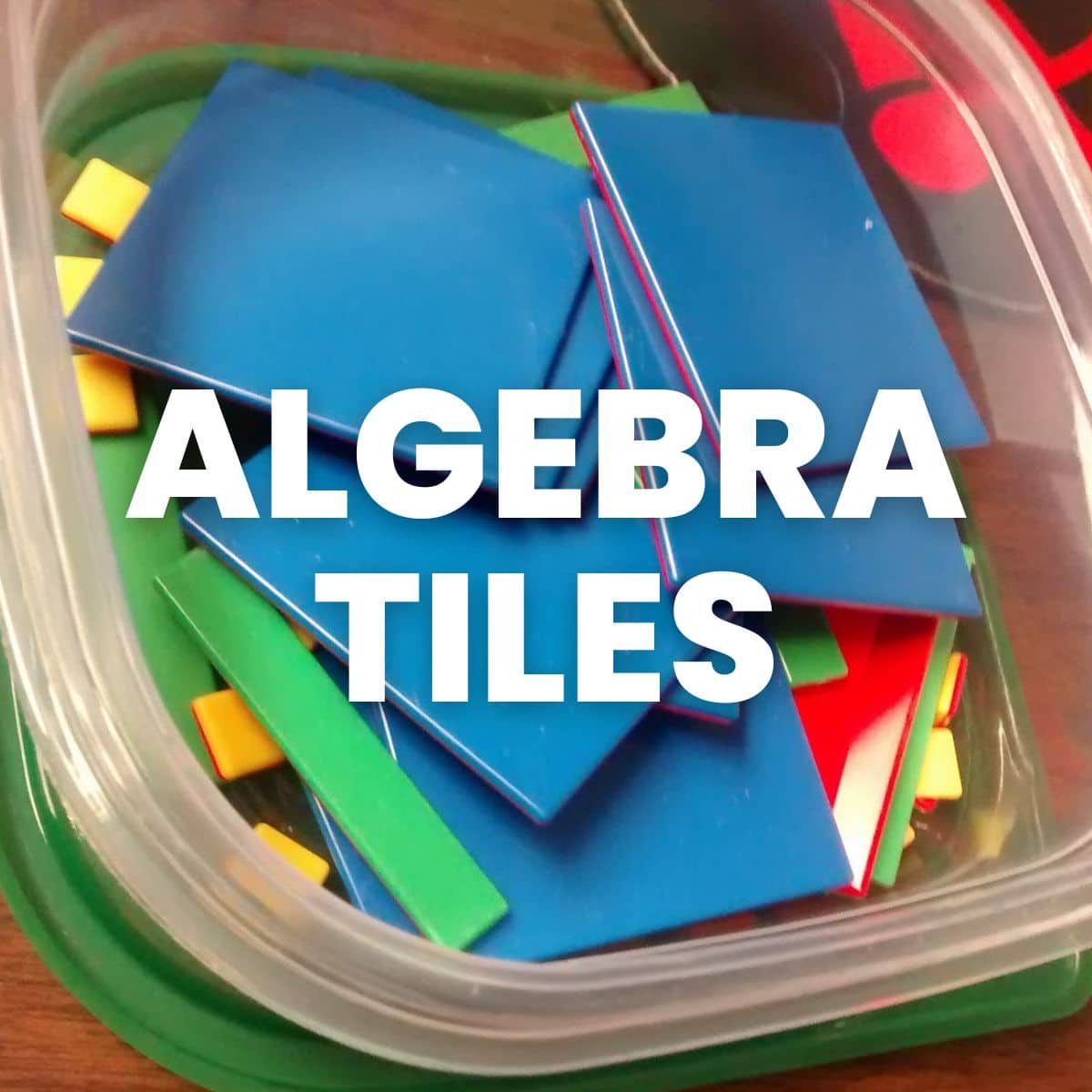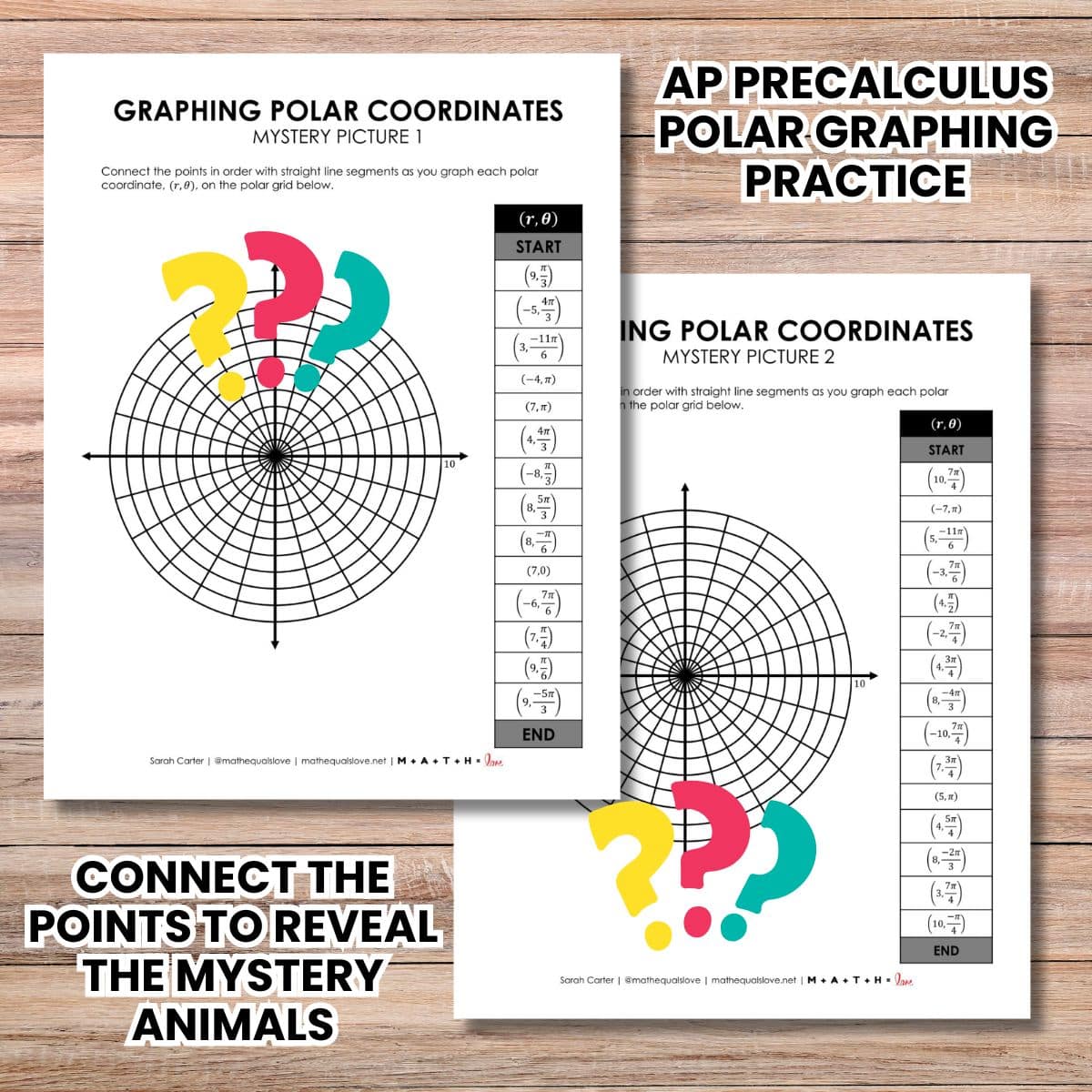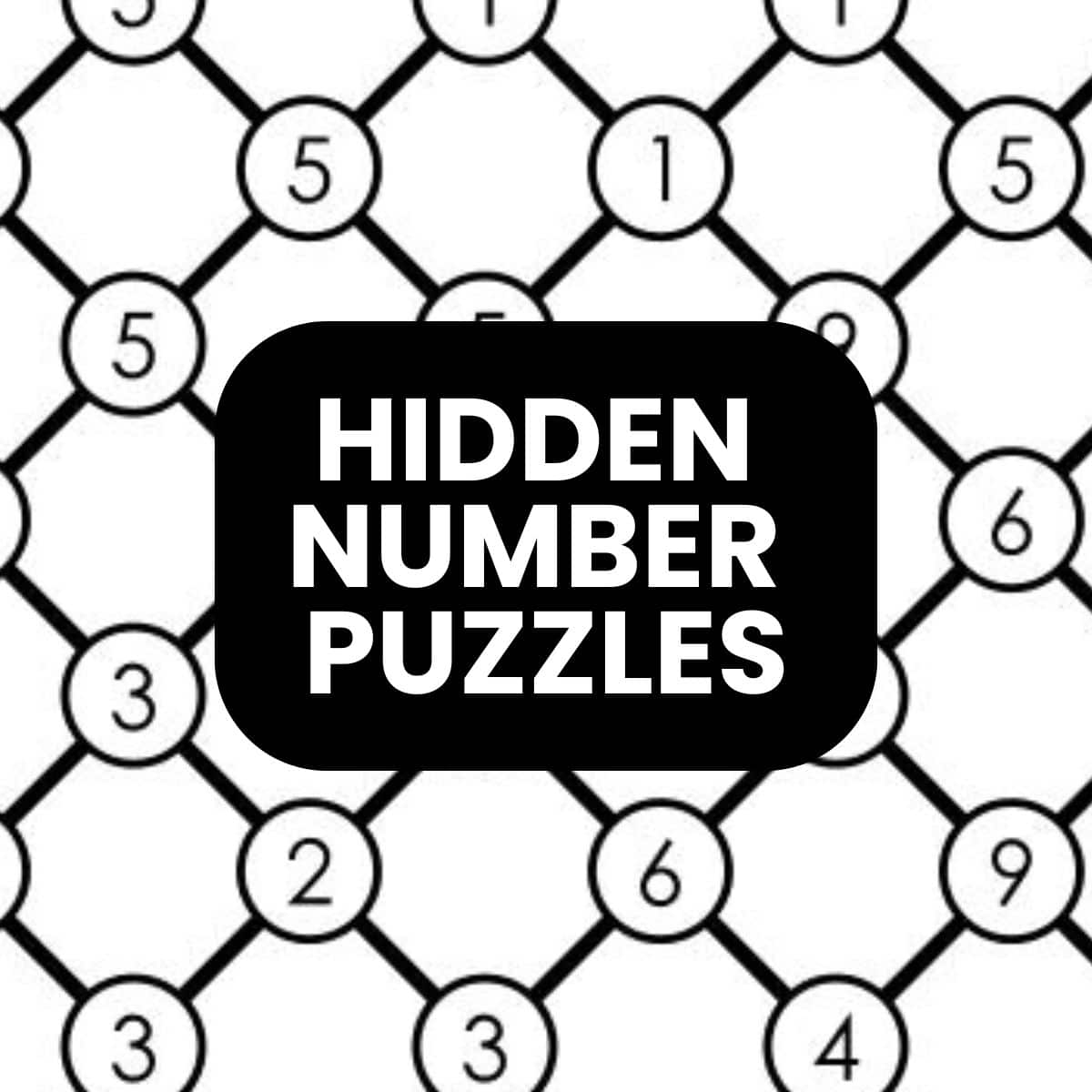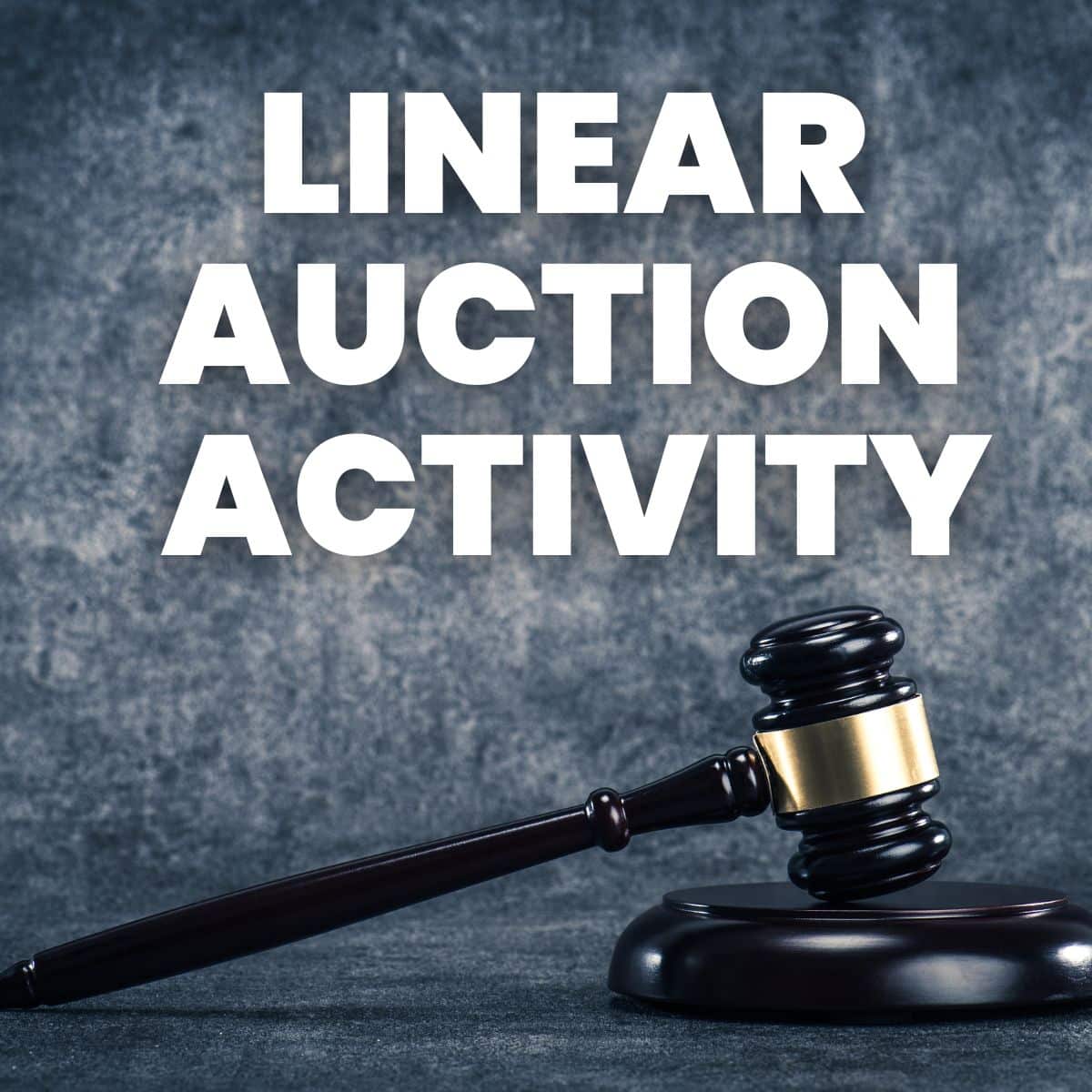What Symbol Comes Next? (M Heart 8 Puzzle)
This blog post contains Amazon affiliate links. As an Amazon Associate, I earn a small commission from qualifying purchases.
This week, my students are tackling a puzzle that asks “What Symbol Comes Next?” Often this is referred to as the M Heart 8 puzzle since the first three symbols are similar to those shapes.
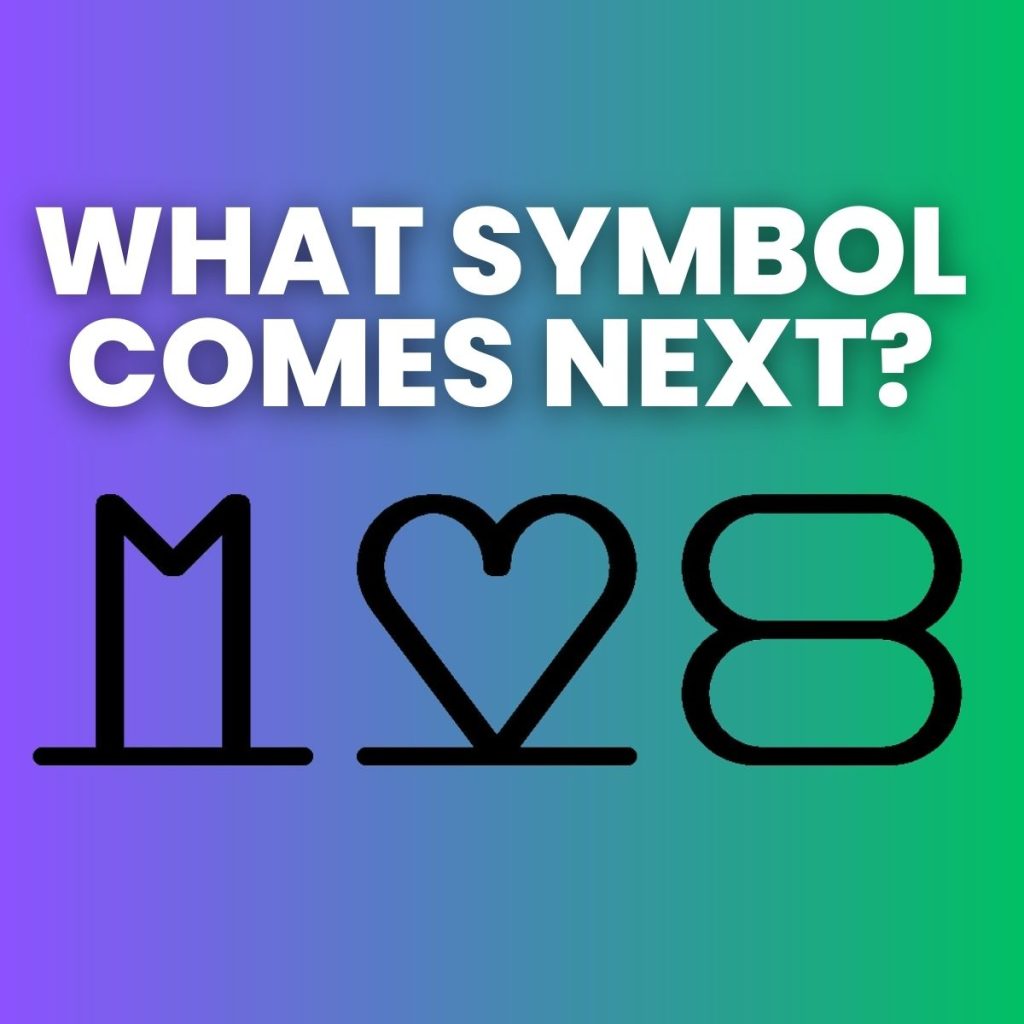
My first experience with this puzzle happened years ago when a blog reader asked for my school’s mailing address so he could mail me a puzzle. He had first come across this puzzle when his math professor in college gave it to him as part of a math test.
Here’s what showed up in my mailbox back in 2014 when I was a third year teacher:
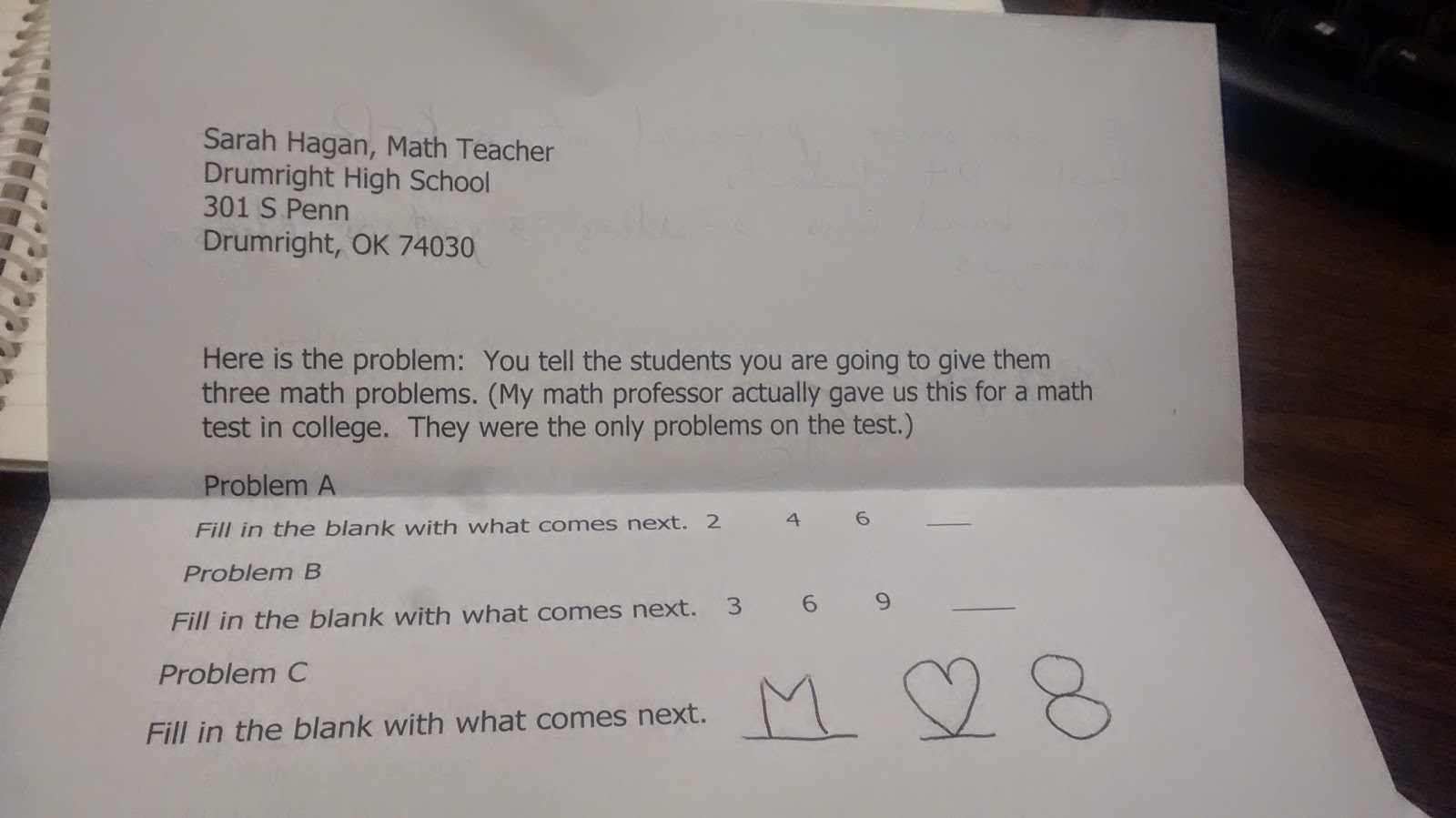
It was a classic “What Symbol Comes Next?” sort of puzzle. I didn’t know at the time just how well known the puzzle was. I had never seen it before.
I pondered this puzzle for WEEKS. I showed it to my sister. She was stumped, too. I showed it to some students who happened to be hanging out in my room at lunch. We could not figure it out.
The person who sent me the puzzle even went to the effort of enclosing the answer to the puzzle in such a way that I could choose whether or not to look at it. Very Smart!
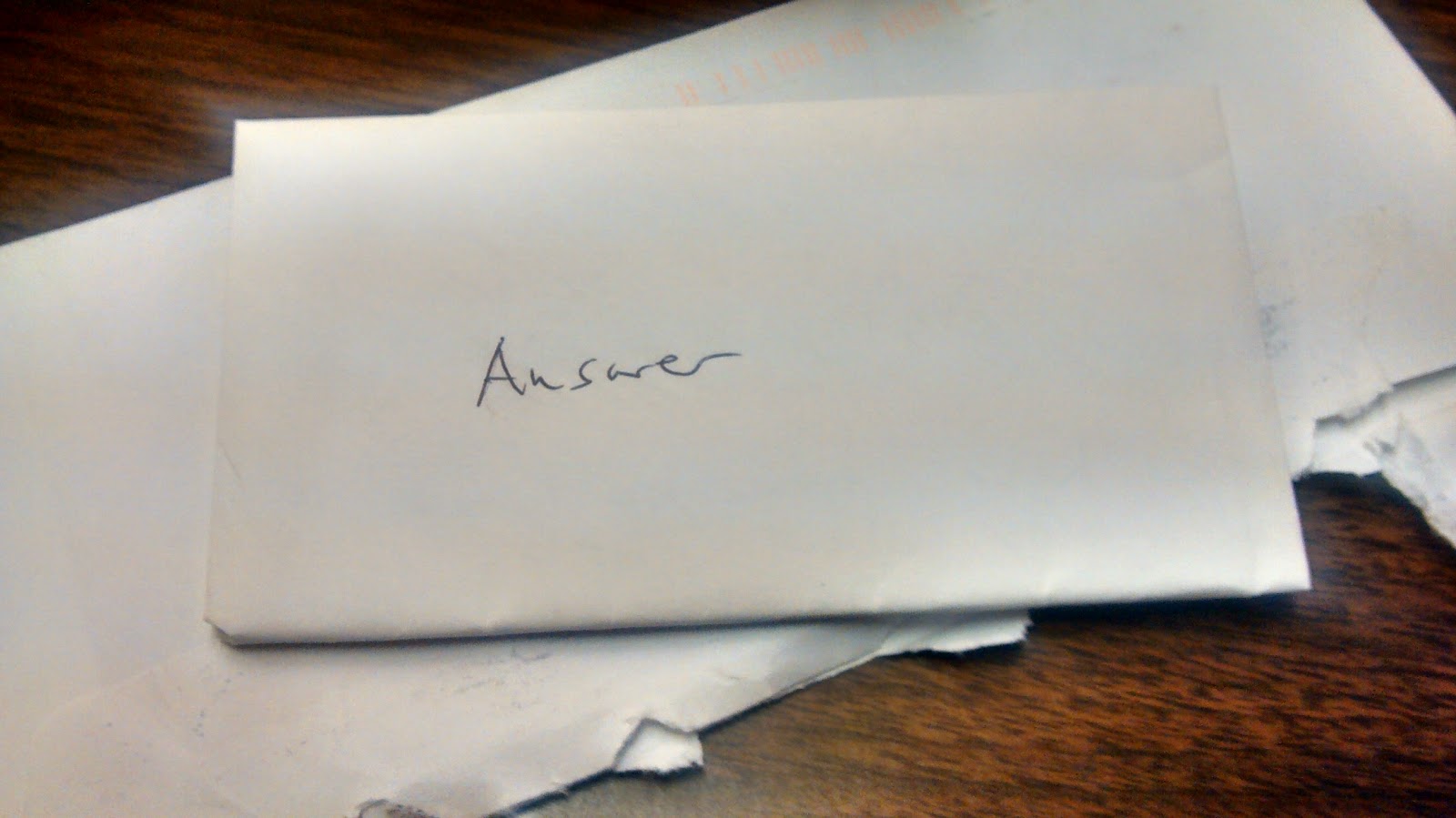
I actually never ended up figuring it out myself. I tweeted about trying to solve it, and someone tweeted back with the answer to the puzzle even though I had specified “no spoilers, please.”
Recently, one of my statistics students complained that I hadn’t actually been changing out the puzzle of the week on a weekly basis. When she said this, I was determined to come up with a few more “no touching” puzzles to put up in my classroom for my students to tackle. My mind immediately went to this sequence puzzle from years ago.
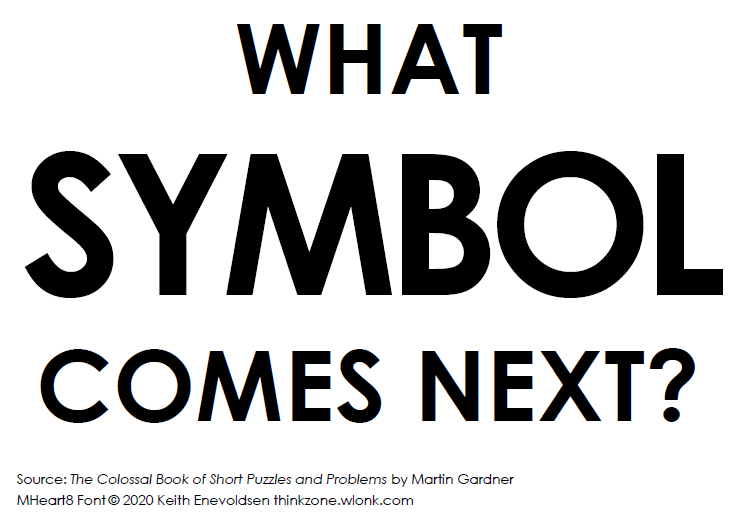
I typed up a poster that asks, “What symbol comes next?” Then, I took some colored paper and printed each symbol on a half-sheet of paper. I ended up trimming 1.5 inches off the top and bottom of each symbol in order to make them look better.
I laminated each symbol and added a magnet from my stash of bulk disc magnets I purchased.
MATH = LOVE RECOMMENDS…
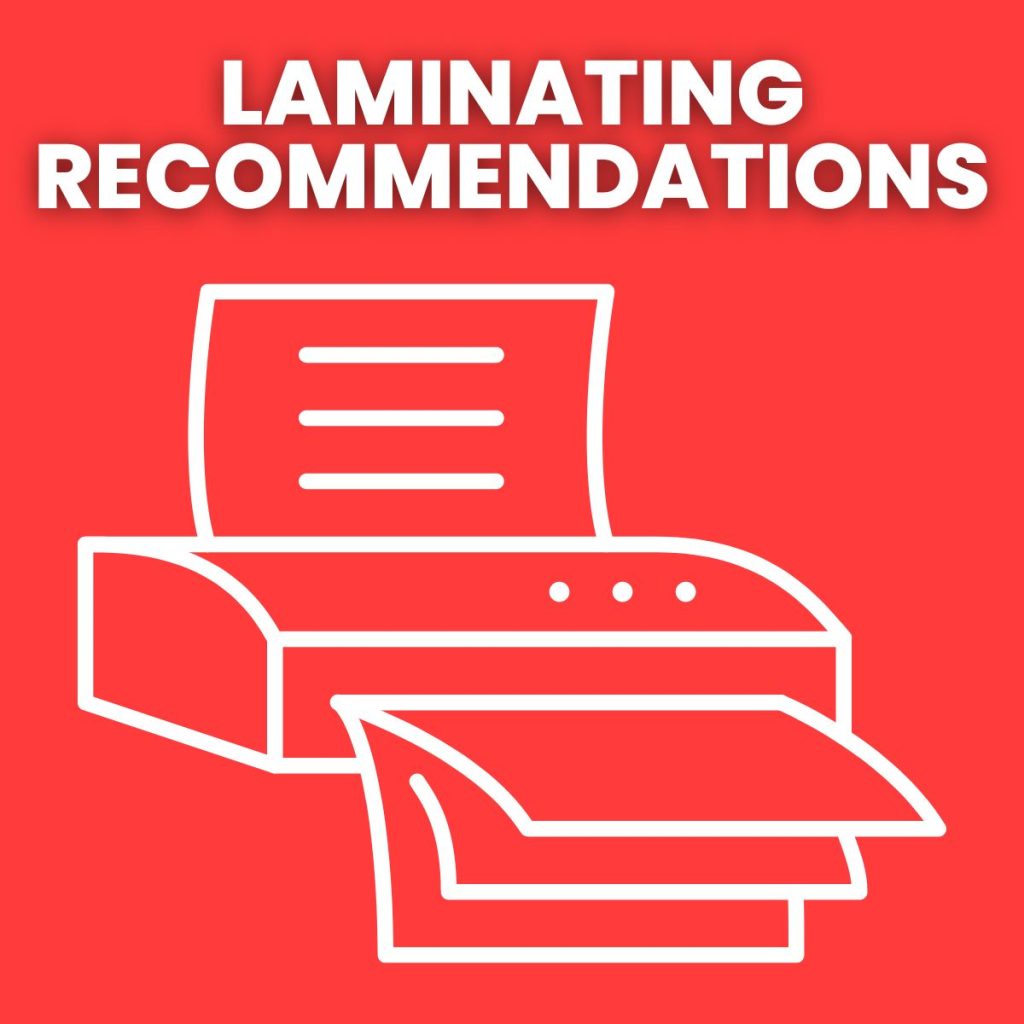
A laminator is a MUST-HAVE for me as a math teacher! I spent my first six years as a teacher at a school with a broken laminator, so I had to find a way to laminate things myself.
I’ve had several laminators over the years. I currently use a Scotch laminator at home and a Swingline laminator at school.
I highly recommend splurging a bit on the actual laminator and buying the cheapest laminating pouches you can find!
On the first day of posting the puzzle, I will be putting the first three symbols on the board – the same three symbols I was provided with when I was originally presented with this brainteaser.
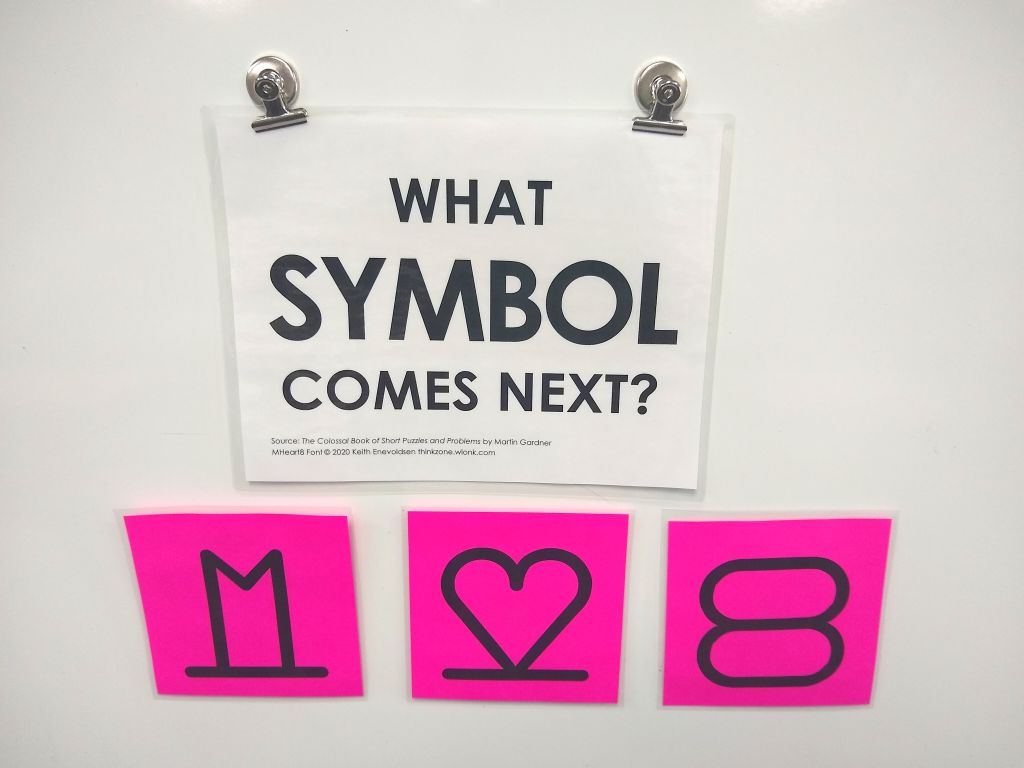
For the next few days, I will add a new symbol each day.
Yesterday was the first day that the puzzle was up on my dry erase board. I had one student see the puzzle and pretty much instantly solve it. I noticed a few other students murmuring about the puzzle to their classmates.
Today, I added the next symbol. It was interesting to see which students noticed that there was a new symbol as they came in the room today and got settled at their desks.
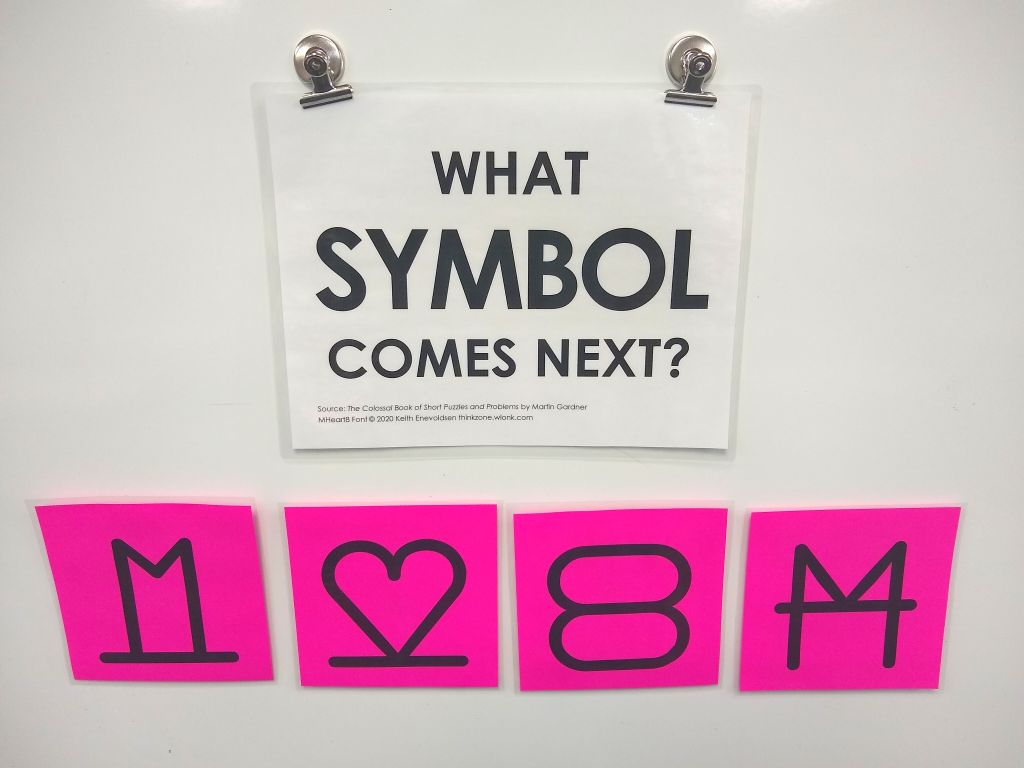
I overheard a conversation between a few students today who were trying to tackle the puzzle. They referred to the first symbol as a bookmark, the second symbol as a heart, and the third symbol as two twinkies.
They noticed that the newest symbol was similar to the bookmark, but the horizontal line had been moved up. I heard them pondering whether the next symbol would be a heart with the line moved up. They seemed to lose their confidence in this theory as they pondered how to continue that pattern since the two twinkies don’t really have a line.
What will they think tomorrow?
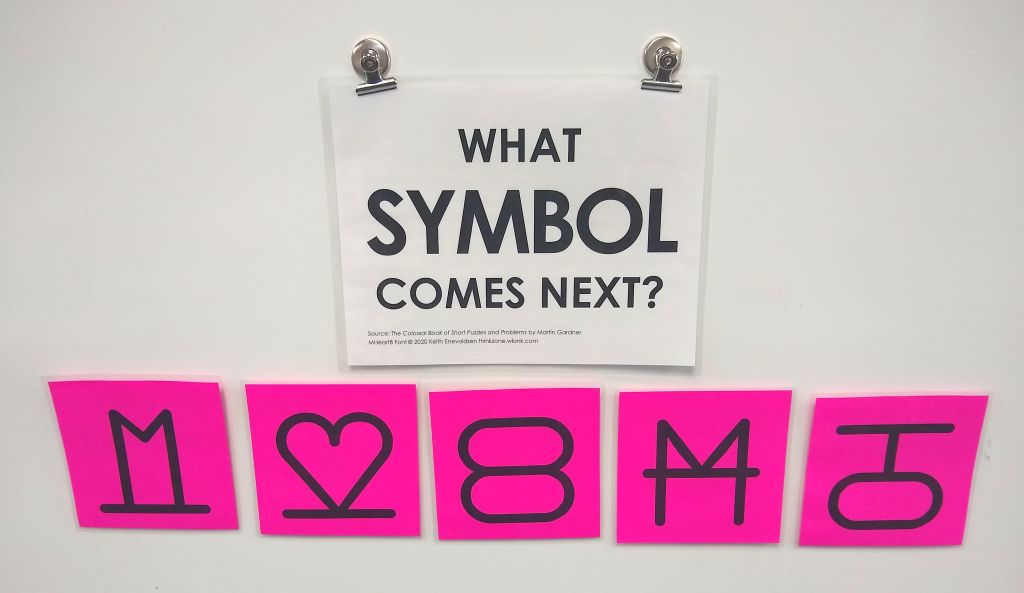
Yesterday, a student walked in the room, took a look at the sequence (with only three terms), and immediately announced to the class “M Heart 8.” This blew my mind because when I did research on this sequence online, it is often called the “M Heart 8 Puzzle.”
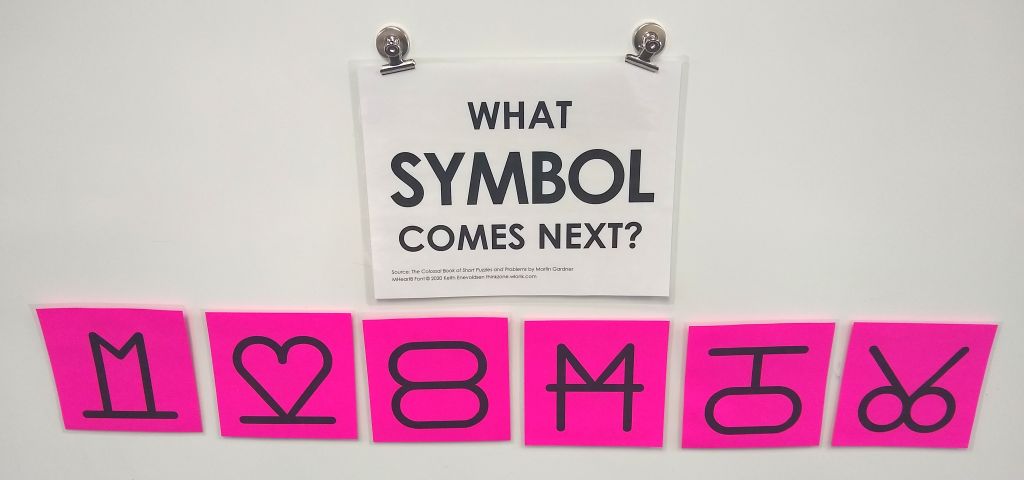
I have yet to determine the exact origins of this puzzle. It is included in Martin Gardner’s The Colossal Book of Short Puzzles and Problems. This book is a compilation of the short puzzles and problems that he featured in his Scientific American column over the course of his career.
Gardner admits that most of the puzzles featured in the book are not his original creation. Instead, they are puzzles that were shared with him or that he had run across in books or publications.
I’m not sure what volume of Scientific American that Martin Gardner originally featured this puzzle in. But, I do know he wrote his column from 1956-1981. So, the puzzle is at least 40 years old. If you know of an earlier origin of this puzzle, I’d love to hear about it!
Keith Enevoldsen says that he first saw the puzzle in print in either the 1980s or 1990s. Apparently, it was even featured on an episode of The Simpsons in 1998! Keith has created a free font called MHeart8 that can be used to easily type out the symbols. This made creating this version to print and post in my classroom super easy!
I’m intentionally not telling you how the sequence works so you can hopefully figure it out for yourself. If you’re really stumped, here are the last six symbols in the sequence in random order. Maybe you could try figuring out the order to help you discover the pattern?
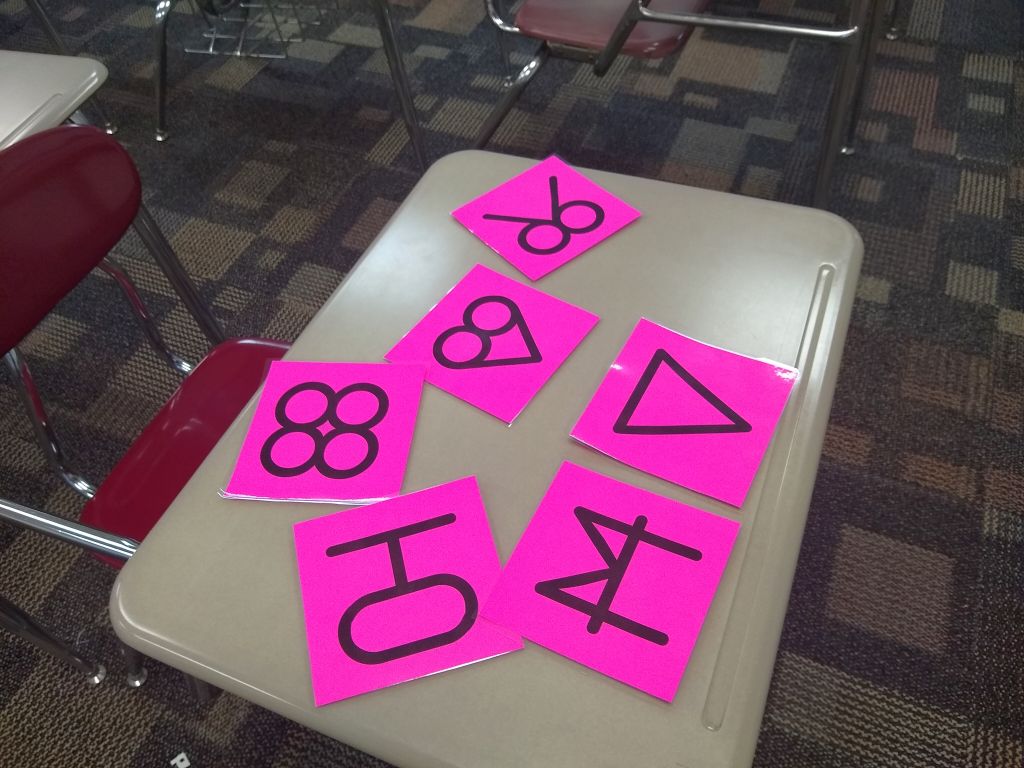
I really like this concept of giving out a tiny part of a puzzle at a time. I think I’m going to explore how to do more puzzles like this in the future.
Activity Files
Click here to SAVE the file to your device.
What Symbol Comes Next? (PDF)
3386 saves – 64.21 KB
Warning – if you choose the editable publisher file, you will also have to install the free MHeart8 font that I mentioned earlier. Without this font, you will not have the correct symbols in your file!
Puzzle Solutions
Puzzle solutions are available on a password-protected solution page. I do not openly post the puzzle answer keys because one of my goals as a resource creator is to craft learning experiences for students that are non-google-able. I want teachers to be able to use these puzzles in their classrooms without the solutions being found easily on the Internet.
Please email me at sarah@mathequalslove.net for the password to the answer key database featuring all of my printable puzzles and math worksheets. I frequently have students emailing me for the answer key, so please specify in your email what school you teach at and what subjects you teach. If you do not provide these details, I will not be able to send you the password.
Not a teacher? Go ahead and send me an email as well. Just let me know what you are using the puzzles for. I am continually in awe of how many people are using these puzzles with scouting groups, with senior adults battling dementia, or as fun activities in their workplace. Just give me enough details so I know you are not a student looking for answers to the puzzle that was assigned as their homework!


